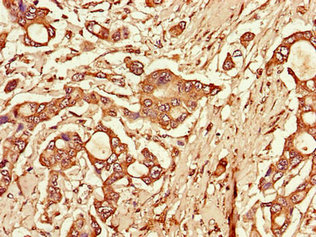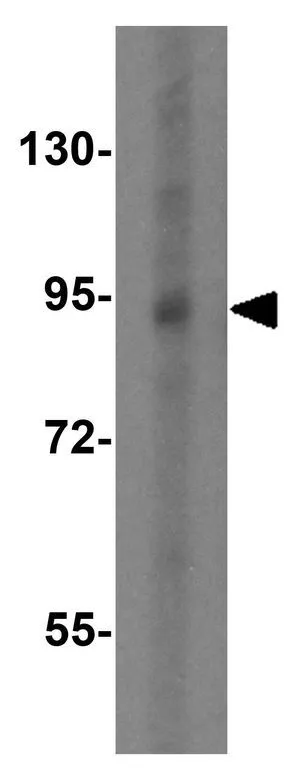TLR3 antibody [HL2314]
GTX638477
ApplicationsWestern Blot, ImmunoHistoChemistry, ImmunoHistoChemistry Paraffin
Product group Antibodies
TargetTLR3
Overview
- SupplierGeneTex
- Product NameTLR3 antibody [HL2314]
- Delivery Days Customer9
- Application Supplier NoteWB: 1:500-1:3000. *Optimal dilutions/concentrations should be determined by the researcher.Not tested in other applications.
- ApplicationsWestern Blot, ImmunoHistoChemistry, ImmunoHistoChemistry Paraffin
- CertificationResearch Use Only
- ClonalityMonoclonal
- Clone IDHL2314
- Concentration1 mg/ml
- ConjugateUnconjugated
- Gene ID7098
- Target nameTLR3
- Target descriptiontoll like receptor 3
- Target synonymsCD283, IIAE2, IMD83, toll-like receptor 3
- HostRabbit
- IsotypeIgG
- Protein IDO15455
- Protein NameToll-like receptor 3
- Scientific DescriptionThe protein encoded by this gene is a member of the Toll-like receptor (TLR) family which plays a fundamental role in pathogen recognition and activation of innate immunity. TLRs are highly conserved from Drosophila to humans and share structural and functional similarities. They recognize pathogen-associated molecular patterns (PAMPs) that are expressed on infectious agents, and mediate the production of cytokines necessary for the development of effective immunity. The various TLRs exhibit different patterns of expression. This receptor is most abundantly expressed in placenta and pancreas, and is restricted to the dendritic subpopulation of the leukocytes. It recognizes dsRNA associated with viral infection, and induces the activation of NF-kappaB and the production of type I interferons. It may thus play a role in host defense against viruses. Use of alternative polyadenylation sites to generate different length transcripts has been noted for this gene. [provided by RefSeq, Jul 2008]
- Storage Instruction-20°C or -80°C,2°C to 8°C
- UNSPSC12352203


![WB analysis of (A) 293 cells, (B) 293 cells overexpressing human TLR3, (C) human intestine, (D) placenta, (E) heart and (F) ovary tissue lysate using GTX13915 TLR3 antibody [40C1285.6]. Dilution : 3 microg/ml](https://www.genetex.com/upload/website/prouct_img/normal/GTX13915/GTX13915_1071_WB_w_23060620_691.webp)



